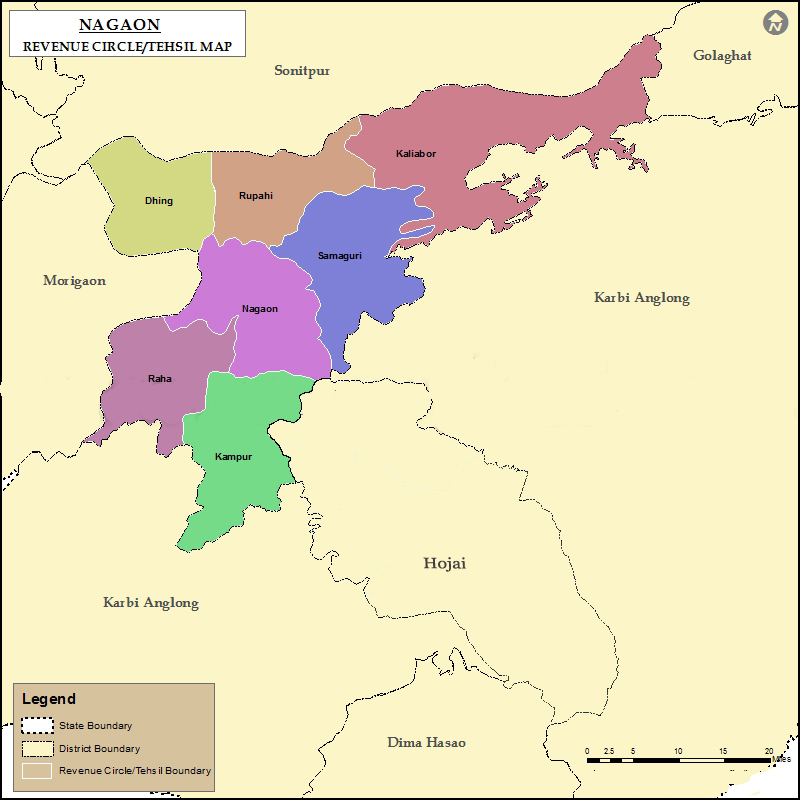History
History of Nagaon
 Till 1826, Nagaon was under Burmese rule. It came under British rule after the Yandaboo treaty was ratified. Nagaon was carved out as a separate administrative district unit in the year 1832. It took a couple of years before the British finally settle on the present site of Nagaon town, on the bank of the Kalong River as the district headquarters in 1839. Known earlier as Khagorijan, the district headquarter was later renamed Nowgong and gradually it developed into a flourishing town.
Till 1826, Nagaon was under Burmese rule. It came under British rule after the Yandaboo treaty was ratified. Nagaon was carved out as a separate administrative district unit in the year 1832. It took a couple of years before the British finally settle on the present site of Nagaon town, on the bank of the Kalong River as the district headquarters in 1839. Known earlier as Khagorijan, the district headquarter was later renamed Nowgong and gradually it developed into a flourishing town.
It became a municipality in the year 1893. The eastern, western, and southern fringes of the newly organized district were once ruled by different small feudal kings or their agents. An extensive and undulating plain intersected by big and small hills and rivers- the geography of the segments determined who their masters ought to be. The residual effects of the rule of the Bhuyans were imaginatively utilized and reorganized by Momai Tamuli Barbarooah, an intrepid officer of the Ahom King Pratap Singa in the first half of the Seventeenth Century. This area, until then, was more of a strategic than administrative concern. It was a newly organized village system- hence called “Nagaon”, Na meaning new.
Till 1826, Nagaon was under the Burmese rule. It came under the British rule after the Yandaboo treaty was ratified. Nagaon was carved out as a separate administrative district unit in the year 1832. It took couple of years before the British finally settle on the present site of Nagaon town, on the bank of the Kalong River as the district headquarters in 1839. Known earlier as Khagorijan, the district headquarter was later renamed Nowgong and gradually it developed into a flourishing town. It became a municipality in the year 1893. The eastern , western and southern fringes of the newly organized district were once ruled by different small feudal kings or their agents. An extensive and undulating plain intersected bby big and small hills and rivers- the geography of the segments determined who their masters ought to be. The residual effects of the rule of the Bhuyans were imaginatively utilized and reorganized by Momai Tamuli Barbarooah, an intrepid officer of the Ahom King Pratap Singa in the first half of the Seventeenth Century. This area, until then, was more of strategic than administrative concern. It was a newly organized village system- hence called “Nagaon”, Na meaning new.



